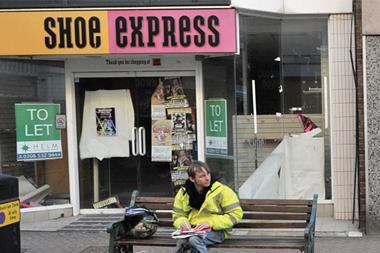UK town centres saw 10,000 shops close down in 2010 and 2011 – while just 15,000 closed between 2000 and 2009.
According to a new report by the Local Data Co, the sharp rise in closures came as consumer spending slumped to 2002 levels. Other key factors included the rise in online sales and the volume growth of retail space, which it said had “diluted the overall profitability of retail estate”.
LDC also warned that a “new reality” of weak growth, rising costs, reduced returns for investors and sluggish consumer spending was here to stay.
It compared the median forecast of 1.5% GDP growth from 2012 to 2016 with a rate of 3.5% between 1995 and 2007.
Every area of the UK saw vacancies increase over the last year apart from London, where empty space fell from 10.7% of capacity to 10.1%.
Of the large town centres, Nottingham fared worst of all, with a vacancy rate above 30%. Margate remains the worst performer in the small category – and overall – with a vacancy rate of 36.5%.
The best performing centres are largely based in the south. Salisbury, with a 7.7% vacancy rate, performed the best.
“This report clearly shows the key economic and structural issues impacting town centres up and down the country,” said LDC director Matthew Hopkinson.
“These issues still have some way to go before we see wide stability and positive change. Most importantly it shows that at the town level a widening gap in health exists between town centres depending on their location, offer and consumer profile.”
Liz Peace of the British Property Federation said: “Our towns face complex structural problems that are not going to be solved by tinkering around the edges. In many places, we need to have a complete re-think about how vacant property could be redeveloped into new uses.”
But the Association of Town Centre Management said the report’s figures were “fatally flawed” and relied on outdated town centre boundaries using information from 2004.
“They use an out-of-date set of criteria for establishing town centre boundaries and, as a result, they don’t reflect the reality on the ground,” claimed ATCM chief executive Martin Blackwell.
“In many locations, very significant changes have taken place that fundamentally render the figures released at best meaningless and at worst a brake on investment that might lead to a vicious circle.”


















No comments yet